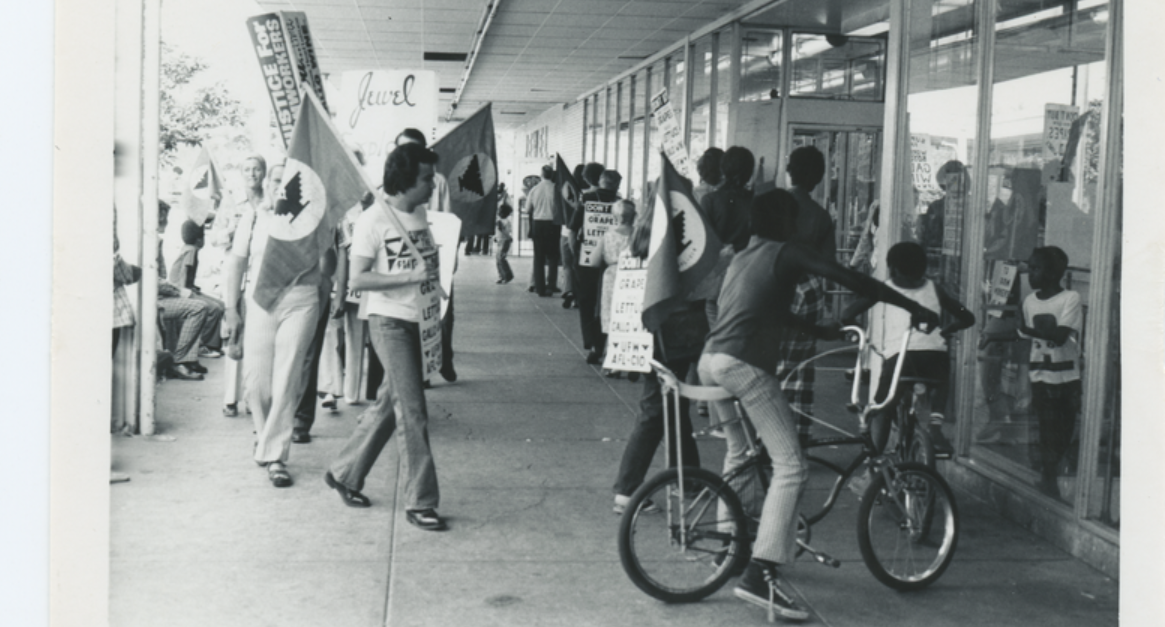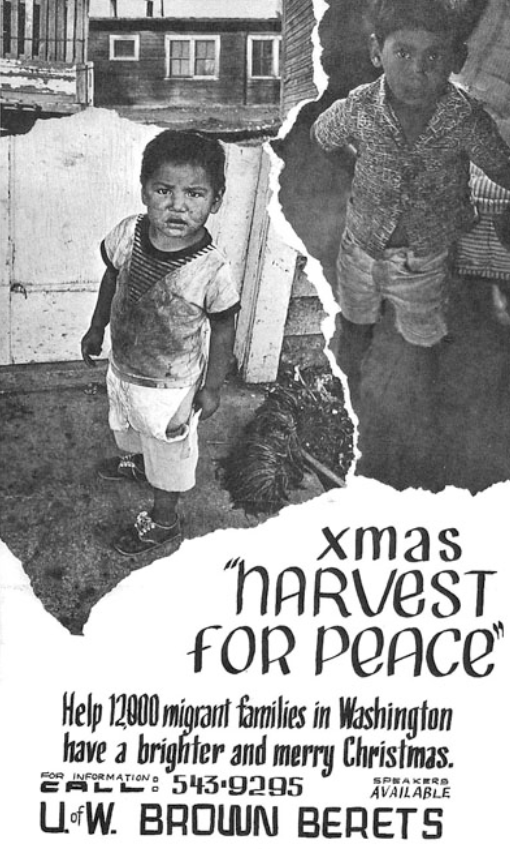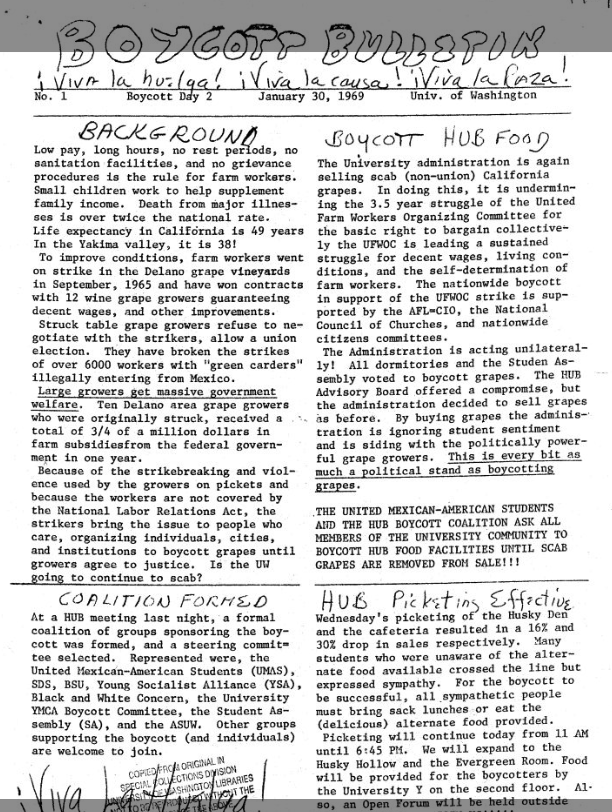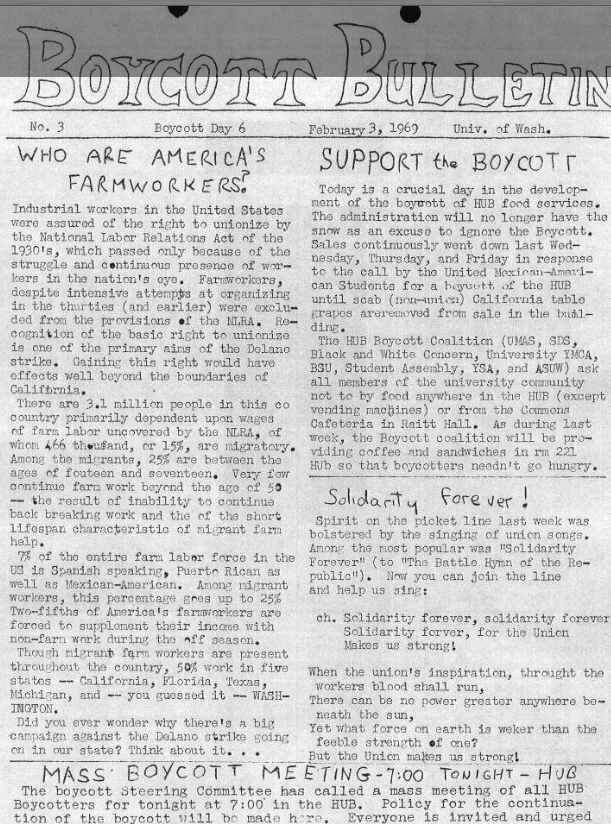Printed around 1970, this picture reveals the execution of the boycott by students and members coincided with the Unified Farm Workers organization. Originally two separate groups known as Agricultural Workers Organizing Committee and the National Farm Workers Association, they merged in order to ameliorate the situation of farm workers in California and eventually established precedents on a national level. As a result of this merger, the connections and foundations of these two groups only increased and showed collaboration in order to achieve a goal. In this case, as a result of boycotts and organized farm workers, many of the leaders of these groups demonstrated national success in the betterment of farm worker conditions which showcased an economic struggle that many Chicano/as as well as other minority groups faced.
This primary source is a posting that encouraged others to help with the charitable act of donated supplies to underprivileged migrant families in Washington. This poster created in circa 1970 displayed an action taken by a Chicano organization known as the Brown Berets. The group was seen as part of the Third Movement for Liberation. The Brown Berets’ movements largely revolved around farm workers struggles, educational reform, and anti-war activism; they have also organized against police brutality. With much more recognition coming from institutions, these organizations developed a footing and attempted to carry out their ideals. This supports my theme because it highlights the social changes that were made because of the greater Chicano/a movement, and how these organizations used their increasing recognition and power in order to improve social conditions in the Chicano community but also as well as immigrants as well.
Dated circa 1969, The HUB Boycott Steering Committee created at least seven “Boycott Bulletins” to keep students up to date on the progress of its grape boycott. What is exceptional about these sources is that it is utilized to keep the younger generations more informed on critical topics that were predominant during the time. Especially considering the grape boycott was a result of Chicano/a activism, these bulletins advocated a more politically conscientious youth. Thus, it reaffirmed the notion of how important it is to create a politically active group in order to remain informed and be ready to mobilize.
Printed between in 1975 and 1976, a newspaper titled, “La Gente de Aztlan”, created in the California University of North Ridge issued a campaign slogan that was frequently apart of many Chicano movements. The idea of unity was emphasized in order to promote unity in strength. Not only did this reaffirmed the Chicano/a movement in universities, but the simple fact of having a medium to do so highlights the advancement of Chicanos/as in education and in social conditions. Due to a continuous effort to utilize media, specifically college newspapers, the Chicano movement in universities were able to easier allow for a wider spread of publicity and hope to be shared among individuals in the movement. Translating the phrase on the newspaper, it states, “United We Will Win”. This is a visual and artistic method in which chicano/a activists used to spread their message of unity.





